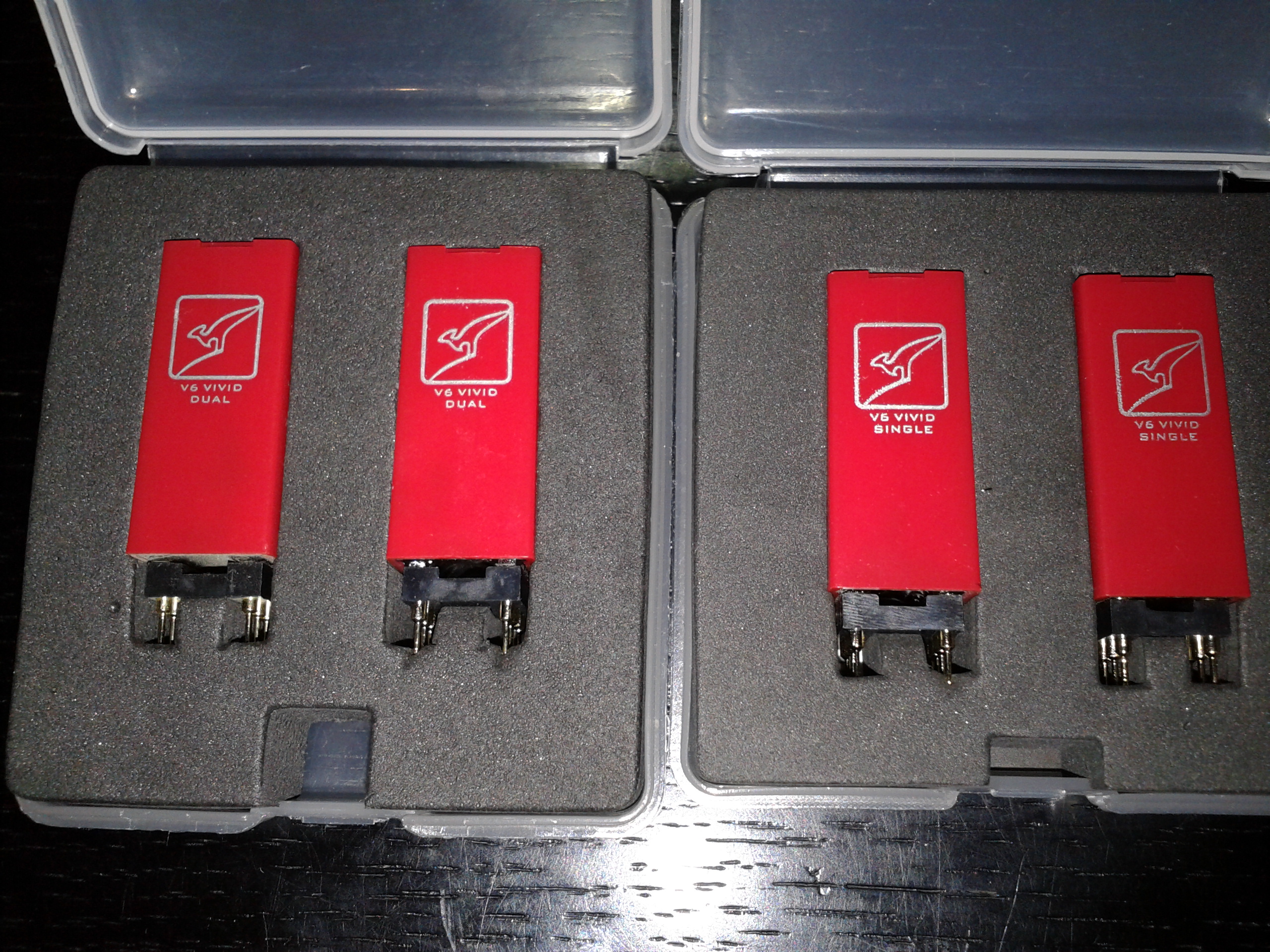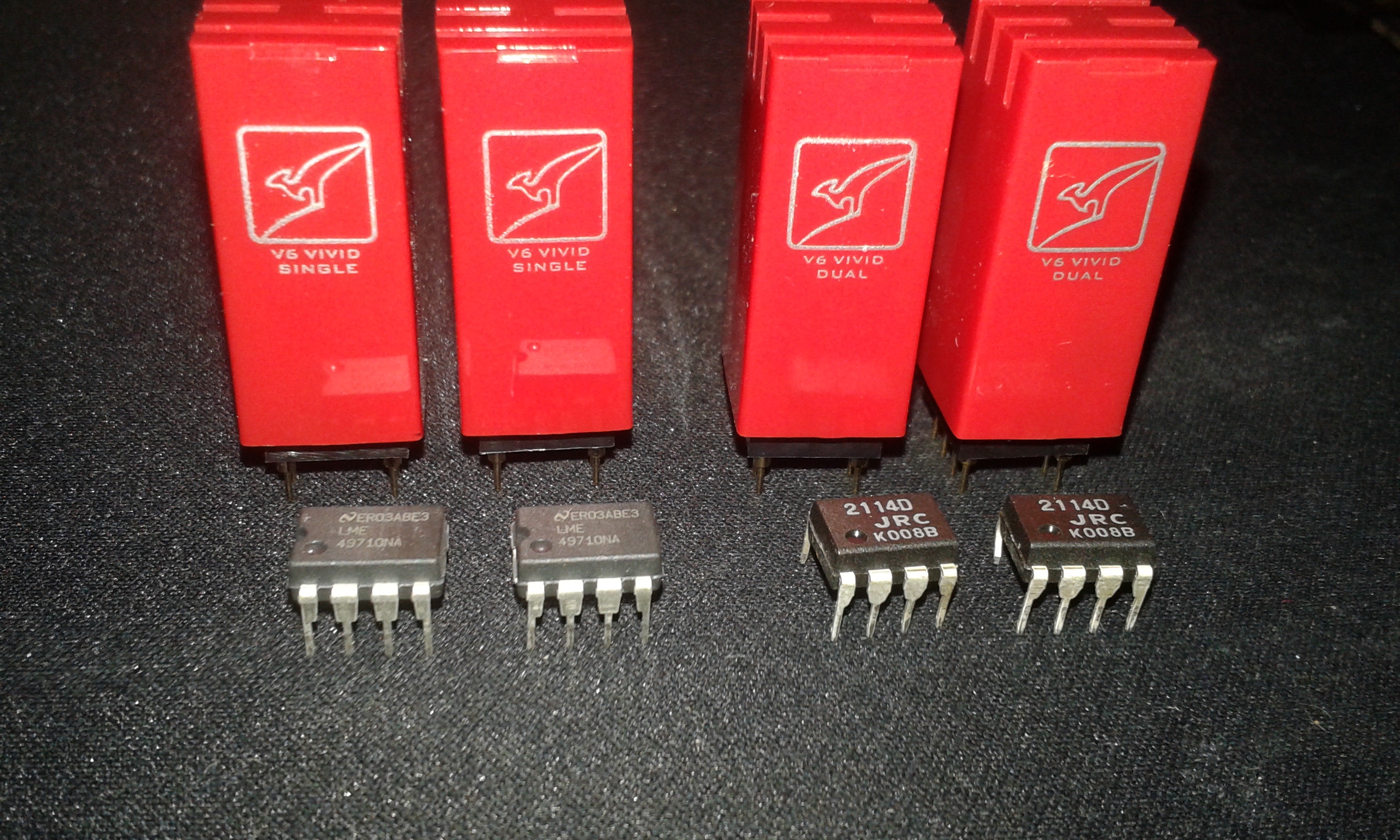I decide it's time to start writing a review about Burson Audio's Supreme Sound Opamp V6 Vivids because otherwise it would never be finished.
First of all many thanks to Charles from Burson Audio for sending me the opamps.
I'm using them in my Creative Sound Blaster X-Fi Titanium HD, the V6 Vivid Duals replaced the default JRC 2114Ds and V6 Vivid Singles replaced the default TI LME49710NAs. For now i'm using a pair a of JBL 305p MKII, the sound card and the monitors are connected with a pair of Oyaide's Neo d+ Class B RCA->XLR cables. Power supply is a Seasonic M12II-520 EVO Bronze.
Using in Audio Creation Mode with Bit-Matched Playback enabled and foobar2000 with ASIO.
The opamps:
Some perspective:
The soundcard before:
And after:
I only started using all of them in this card a week ago, so as i read and experienced with Auzentech X-Fi Prelude, they still require lots of usage before excellence, but i can say with absolute certainty:
These are very detailed, clean and transparent, sweet sounding opamps for now maybe a tiny bit on the bright side. They make big, airy, wide and tall sound.
Guitar strings are sparkling with joy. I really like male voices on these how they have some weigth behind them. Also I didn't find them bass shy at all, can deliever quite a punch, earlier got the chance to try a Prodipe Pro 8 V3 monitors, even though i didn't like the sound signture of them (the JBLs are too bright for my taste though), but the Vivid could deliver some nice textured low frequency sound, not just some loose / bloated bass but even the small 5" JBLs have some room filling low-ish extension as well, though not enough to feel it with my whole body.
I like how these opamps can fill the room with sound (with good-ish speakers of course). For example in games where in smaller indoor rooms everything sounds, well.. small and confined, and exterior place are really open and airy, sound differently when shooting a bullett in a canyon and get a cool reverb . Also with these sound transparent and well placed / positioned, it's easier to get a sense of from where the sounds are coming from. But these are applies to music too of course.
It's really a cool feeling to be able to differentiate different kind of instruments, vocals, effects placed and moving all around with clearity in for example Spiritualized - Ladies and Gentlemen We Are Floating in Space or in Pink Floyd - Welcome To The Machine songs.
So i really like these opamps, space luckly is not an issue for me, but maybe is for others or in smaller devices. I find them a bit pricey for my wallet, but those for who can afford them these are good upgrades from default opamps. Burning them in requires time but aside from that i can't find anything wrong with them.
2018.12.20: Just out of curiosity i installed again my X-Fi Prelude with the 1000+ hours used V6 VIVID, much punchier bass and pronounced mids with better body, overall more balanced and warmer sound signature compared to the newish Vivids, which sound thinner and brighter in comparison, can't wait for them to mature!
2019.12. In the end i put back the original opamps, not because they are better, but because somehow it is easier to listen to them, much less highs and a more balanced / fatter sound with more body somehow. Tried with other speakers too, a cheaper Creative 5.1 and an Edifier R1900 TII speaker, not the speakers fault, nor neccessary the opamps' , just in the X-Fi Titanium HD the 2 (per channel) VIVIDs in a row don't produce the sound i really like. In the X-Fi Prelude 7.1 where a dual V6 VIVID replaced 1 LM4562 there wasn't such a big sound signature change, just improvements, so not the VIVID opamps at fault, just the 4 VIVIDs are not the right match for the X-Fi Titanium HD card i think.



























